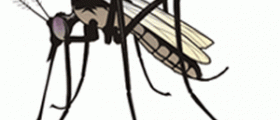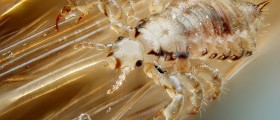
Some might think that chronic bee paralysis virus is a virus passed to humans by the bees, causing paralysis. This is not correct, as this is a specific virus that attacks bees only and causes paralysis and other symptoms in them. Humans should not worry about this virus unless they have a particular affection for bees or if they keep bees for honey, wax or pollination.
What is chronic bee paralysis virus?
Beekeepers have been puzzled for a long time with a strange phenomenon that can sometimes be observed in beehives. One or more of the bees would simply lie on its back, motionless but still alive, or twitching on the top bars. Even if the hive is smoked and the other bees escape, the paralyzed bees would stay behind.
Before the virus was extracted from one of the paralyzed bees, it was believed that the paralysis was caused by a species of mite.
The virus is spread through direct contact between bees in crowded hives. The contact between bees breaks their hair from the cuticle, exposing epidermal cytoplasm, which becomes susceptible to the virus.
Chronic bee paralysis virus or CBPV mainly attacks adult bees that spend a lot of time in closed confinement. It is particularly widespread in Britain, where it appears to be endemic.
Signs of the virus in a bee colony
There are two syndromes that indicate the virus infection in the hive. The first syndrome is characterized by intense trembling of the bee’s body and wings. Because of this, the bee cannot fly and moves around by crawling on the ground or up the stems of the plants. Affected crawling bees can be observed in large numbers, even more than one thousand. They tend to huddle together with their abdomens often bloated and wings spread or dislocated.
In the second syndrome, the bees are able to fly but they lose almost all their hair. Because of that, they appear darker and smaller. Other bees in the colony often attach them, which may cause the loss of the hair. The guarding bees push them towards the exit from the hive, and after a few days they begin to tremble. After the trembling phase, they lose the ability to fly and soon die.
Treatment and control
There is no effective treatment for the chronic bee paralysis virus, just like there is no treatment for other viral diseases affecting bees.
In most cases viral diseases in bees are associated with stress, due to climate conditions or other diseases. Bees affected by the Acarine mite are particularly susceptible to CBPV. Keeping the bees protected from parasites and other diseases is the only way to control the CBPV epidemic, but this is often not enough.

















Your thoughts on this
Loading...